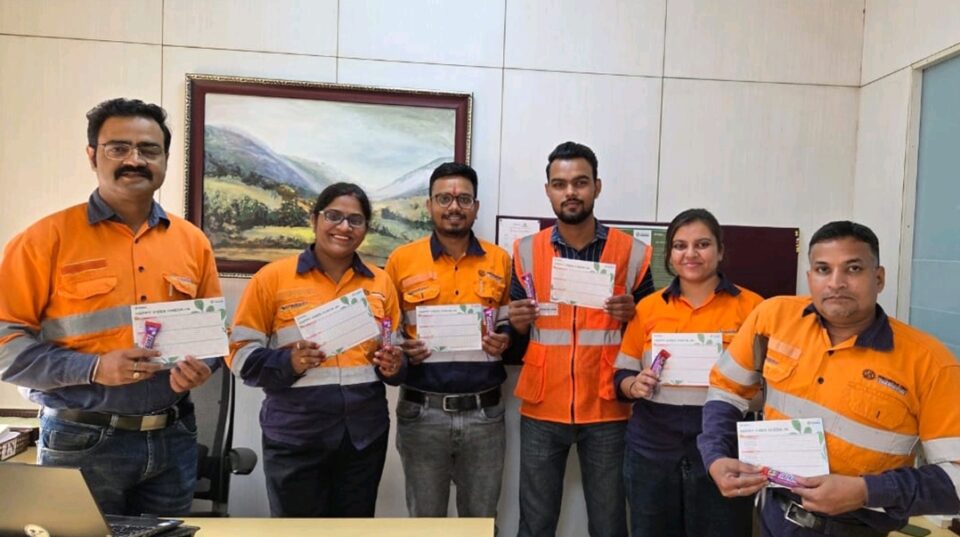When Silence Speaks Louder: Transforming Workplace Mental Health Through The Art of Listening
Walk into any bustling office and you’ll hear the familiar symphony of productivity: keyboards clicking, phones ringing, conversations flowing. But what about the sounds we don’t hear? The subtle sigh of overwhelm. The nervous foot tapping under the desk. The quiet “I’m fine” that actually means anything but fine. Yes, let’s talk about Workplace Mental Health.
This is the reality behind Hindustan Zinc‘s groundbreaking #WeHearTheQuiet campaign, launched on World Mental Health Day 2025. Their initiative recognizes a fundamental truth that many organizations miss: workplace mental health isn’t just about addressing the obvious crises. It’s about developing the emotional intelligence to notice what isn’t being said.
The Hidden Crisis: When High Performance Masks Distress
Modern workplaces face an invisible epidemic. Research shows that 70% of employees access Employee Assistance Programs due to workplace stress, yet only 5% actually utilize these services when offered. This staggering disconnect reveals a critical gap between providing mental health resources and creating environments where employees feel safe to use them.
The concept of “quiet cracking” has emerged as a defining workplace trend in 2024-2025. Unlike dramatic burnout, this phenomenon describes the gradual, almost invisible erosion of employee engagement and mental well-being. According to recent workplace studies, global employee engagement dropped to just 21% in 2024, with quiet cracking contributing to $438 billion in lost productivity.
What makes this particularly insidious is how it mirrors the very silence that Hindustan Zinc’s campaign addresses. Employees suffering from quiet cracking often maintain professional facades while internally disengaging from their work and colleagues.
The Science of Listening: Why Psychological Safety Matters
Psychological safety—the shared belief that one can speak up without fear of negative consequences—forms the foundation of effective workplace mental health initiatives. Amy Edmondson’s research reveals that psychological safety develops through four distinct stages: inclusion safety, learner safety, contributor safety, and challenger safety.
However, recent studies show a concerning pattern: newcomers to organizations typically start with higher psychological safety levels but lose this over time, often taking years to recover. This decline particularly affects those who might benefit most from speaking up about mental health challenges.
Creating truly psychologically safe environments requires more than policy changes. It demands what researchers call “rewarded vulnerability”—actively recognizing and supporting employees who share their struggles rather than simply avoiding punishment for disclosure.
Beyond Traditional EAPs: The Power of Proactive Recognition
Traditional Employee Assistance Programs, while valuable, often operate reactively. Research indicates that while 88% of UK employers and 73% of US employers offer EAPs, utilization remains problematically low at just 5% of eligible employees.
The most effective programs now focus on early intervention and environmental changes rather than crisis response. Organizations implementing comprehensive mental health strategies—including manager training, flexible work arrangements, and stigma reduction campaigns—report 20-30% reductions in employee stress symptoms within 1-2 years.
Hindustan Zinc’s approach exemplifies this evolution. Their #WeHearTheQuiet campaign includes health tracker charts for self-awareness, healing sound bowls for immediate stress relief, and digital detox hours—all designed to normalize mental health conversations before crises develop.
The ROI of Emotional Intelligence: Financial Returns of Listening
The business case for comprehensive workplace mental health initiatives has never been stronger. For every $1 invested in employee mental health support, organizations see an average return of $4-8 through reduced absenteeism and increased productivity.
More specifically, companies with robust mental health cultures report:
- 20% lower reported rates of burnout compared to organizations without formal programs
- 70% of EAP users report improved stress management and overall mental health
- 60% show improved job performance after accessing mental health support
- 50% express increased organizational loyalty
One compelling case study involves sportswear company On, which achieved an 11.6x ROI ($2.9 million annually) through employee health interventions, including $1.3 million in productivity gains and $1.1 million from reduced voluntary attrition.
Building a Culture That Hears The Quiet
Creating environments where silence is heard requires systematic cultural transformation. The most successful organizations implement multi-layered approaches:
Leadership Vulnerability: Senior executives sharing personal mental health experiences creates permission for others to be open. When healthcare system executives shared their own struggles, it led to organization-wide culture shifts.
Manager Training: Equipping supervisors to recognize subtle signs of distress proves crucial. Programs focusing on interpersonal skills, active listening, and understanding how job stressors affect mental health show significant impact.
Environmental Design: Physical and policy changes matter. Quiet spaces, flexible work arrangements, and “no-questions-asked” mental health leave policies demonstrate organizational commitment beyond words.
Continuous Listening: Regular pulse surveys, feedback mechanisms, and proactive check-ins help identify support needs before they become crises. Organizations using employee listening platforms report more effective mental health interventions.
The Innovation of Sound: Creative Approaches to Workplace Wellness
Hindustan Zinc’s inclusion of sound therapy tools represents an emerging trend in workplace mental health innovation. Research on workplace noise reveals that chronic auditory stress contributes significantly to emotional exhaustion and cognitive overload.
Sound-based interventions—from healing bowls to white noise machines to designated quiet hours—address this often-overlooked environmental stressor. These approaches recognize that mental health support must consider the full sensory experience of work environments.
Digital wellness strategies also show promise. Structured “digital detox” periods, where employees disconnect from technology for focused reflection or conversation, help combat the constant stimulation that contributes to workplace anxiety.
From Reactive to Predictive: The Future of Workplace Mental Health
The most innovative organizations are moving beyond reactive mental health support toward predictive approaches. This involves:
Data-Driven Insights: Organizations like Novo Nordisk deploy regular surveys using validated mental health screening questions, identifying teams with high stress levels for targeted interventions.
Personalized Support: Rather than one-size-fits-all EAPs, companies are creating individualized wellness programs based on specific risk factors and preferences.
Preventive Design: Building mental health considerations into job design, workflow planning, and organizational structure from the beginning rather than addressing problems after they develop.
Community Building: Recognizing that mental health is inherently social, successful programs focus on building supportive peer networks and reducing the isolation that contributes to workplace distress.

Practical Takeaways for CX and EX Professionals
Start with Environmental Assessment: Conduct comprehensive audits of workplace stressors, including noise levels, physical space design, workload distribution, and communication patterns. Often, the quietest struggles stem from environmental factors.
Train for Micro-Signals: Develop managers’ abilities to recognize subtle indicators of distress. This includes changes in communication patterns, work quality fluctuations, social withdrawal, and physical manifestations like fidgeting or posture changes.
Create Multiple Access Points: Don’t rely solely on formal EAP channels. Offer various ways for employees to seek support, from peer programs to digital resources to informal check-ins.
Measure What Matters: Track leading indicators like psychological safety scores, early intervention usage, and employee feedback on support accessibility rather than just lagging indicators like turnover and absenteeism.
Normalize the Conversation: Use campaigns, training, and leadership modeling to make mental health discussions as routine as physical safety talks. The goal is cultural transformation, not just program implementation.
Design for Prevention: Build mental health considerations into role descriptions, team structures, and workflow processes. Prevention is more effective and cost-efficient than intervention after problems develop.
The silence in our workplaces often speaks louder than words. By learning to hear what isn’t being said—and creating environments where quiet struggles can be voiced without fear—organizations can transform not just individual well-being but entire cultures of care and productivity. Hindustan Zinc’s #WeHearTheQuiet campaign points toward a future where workplace mental health moves from reactive crisis management to proactive cultural transformation, where every employee feels truly heard, even in their quietest moments.

